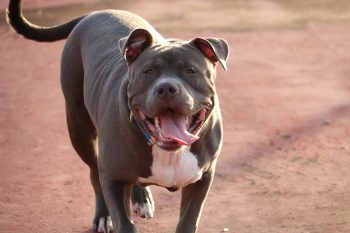The Pit Bull Terrier, often cloaked in myth and surrounded by controversy, carries a storied past that stretches back over centuries. Originating from the British Isles, the breed represents a melting pot of tenacity, strength, and agility, primarily descending from the Old English Bulldog and various terrier breeds. Initially crafted for the brutal sport of bull-baiting, these dogs showcased remarkable prowess in the pit, a testament to their enduring spirit. However, the eventual outlawing of such barbaric pastimes in 1835 marked a significant turning point, propelling the breed towards roles that highlighted their loyalty, intelligence, and versatility. This evolution from feared combatants in blood sports to beloved family members and service animals paints a complex picture of transformation and resilience. Through examining the Pit Bull’s origins, breed development, and fluctuating societal roles, this article aims to provide a comprehensive overview of a dog breed that continues to captivate and sometimes divide public opinion.
Early Beginnings and Bull-Baiting
The history of the Pit Bull is deeply intertwined with the practice of bull-baiting in England, a spectacle where dogs were set upon a tethered bull, with spectators betting on the outcome. This cruel sport not only demonstrated the dogs’ physical strength and tenacity but also their pain endurance and aggression. The Old English Bulldog, now extinct, was initially used for this purpose. However, as the demand for more agile and ferocious participants grew, breeders began crossing bulldogs with terriers, aiming to combine the former’s robustness with the latter’s agility and tenacity. This crossbreeding laid the foundational genetic blueprint for what would eventually be recognized as the Pit Bull breed.
Migration to America and the Shift in Roles
As immigrants from the British Isles settled in the United States, they brought their beloved dogs with them, introducing the Pit Bull’s ancestors to a new continent. In America, the breed’s role expanded beyond the fighting pit. The American frontier required dogs that were not only strong and courageous but also versatile. Pit Bulls were used for a variety of tasks on farms and homesteads, including hunting, herding, and guarding. This versatility helped to cement their place in American society as indispensable companions. The establishment of the United Kennel Club (UKC) in 1898 and the subsequent recognition of the American Pit Bull Terrier reflected a growing appreciation for the breed’s unique qualities.
Breed Evolution and Public Perception
Over the years, the Pit Bull has undergone significant evolution, both physically and in the public’s perception. Initially bred for aggression and fighting, modern breeding practices have increasingly emphasized temperament, leading to a breed capable of great loyalty, affection, and intelligence. Despite these positive traits, the Pit Bull has often been the subject of negative media portrayal, leading to widespread fear and misunderstanding. This has been exacerbated by instances of irresponsible ownership and breeding, which have contributed to tragic incidents. The breed’s reputation has fluctuated dramatically, from celebrated war heroes and beloved family pets to being feared and legislated against in various jurisdictions.
Controversy and Breed-Specific Legislation
The latter part of the 20th century saw a rise in breed-specific legislation (BSL), with laws being enacted in some areas to ban or restrict the ownership of Pit Bull-type dogs. Proponents of BSL argue that these measures are necessary to protect public safety, citing statistical evidence of attacks. However, opponents contend that such laws are discriminatory, ineffective, and fail to address the root causes of dog aggression, such as owner behavior, training, and socialization. The debate over BSL highlights the complex interplay between breed characteristics, human behavior, and societal responsibility.
Advocacy, Rehabilitation, and the Future
In response to negative stereotypes and the challenges of BSL, a vibrant community of Pit Bull advocates has emerged, dedicated to rehabilitating the breed’s image and promoting responsible ownership. Organizations and individuals alike work tirelessly to showcase the Pit Bull’s capacity for love, loyalty, and service. From therapy and rescue work to simply being devoted companions, Pit Bulls have demonstrated their ability to overcome adversity and prejudice. The future of the Pit Bull breed hinges on ongoing education, advocacy, and a collective effort to foster understanding and compassion for these often-misunderstood dogs.
The narrative of the Pit Bull reflects broader themes of resilience, transformation, and the enduring bond between humans and dogs. From their origins in the bloody arenas of bull-baiting to their current status as beloved pets and service animals, Pit Bulls have navigated a path marked by controversy, change, and ultimately, redemption. As society continues to grapple with questions of animal welfare, public safety, and the ethics of breed-specific legislation, the Pit Bull stands as a testament to the complex relationship humans share with their canine companions.
Frequently Asked Questions About The History of Pit Bulls
The post The History and Origin of the Pit Bull: A Comprehensive Look appeared first on iHeartDogs.com.

